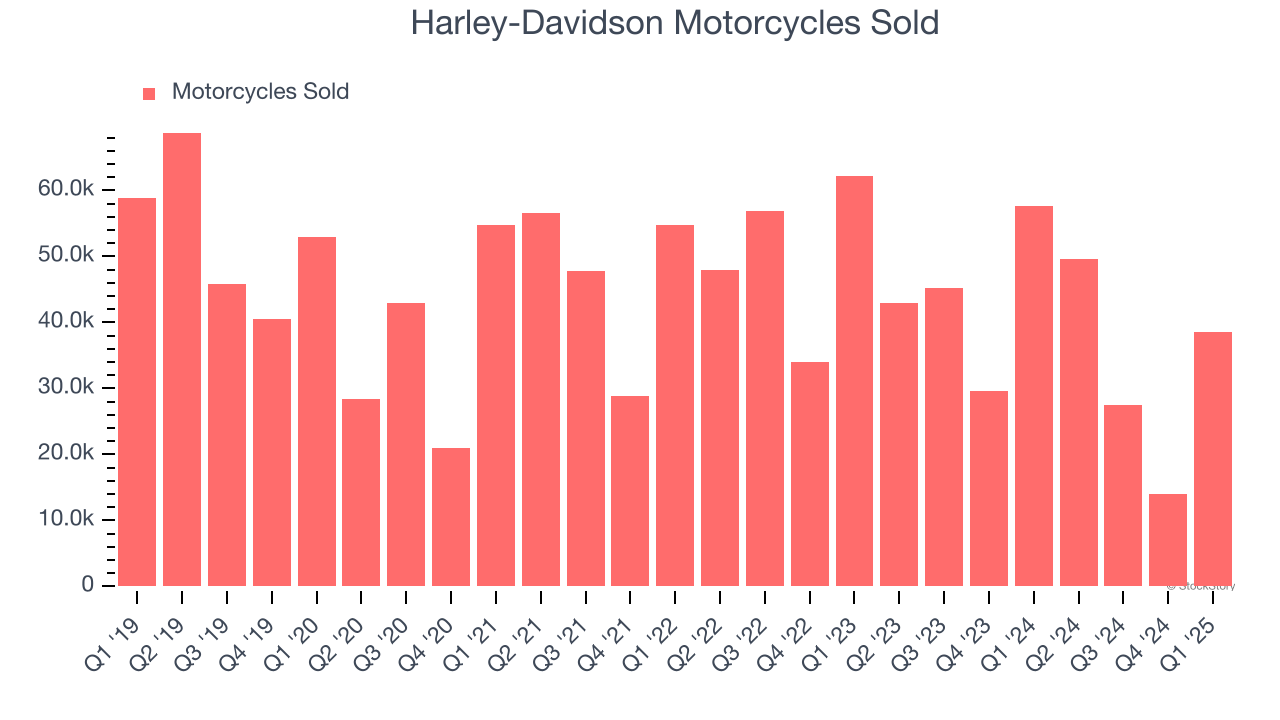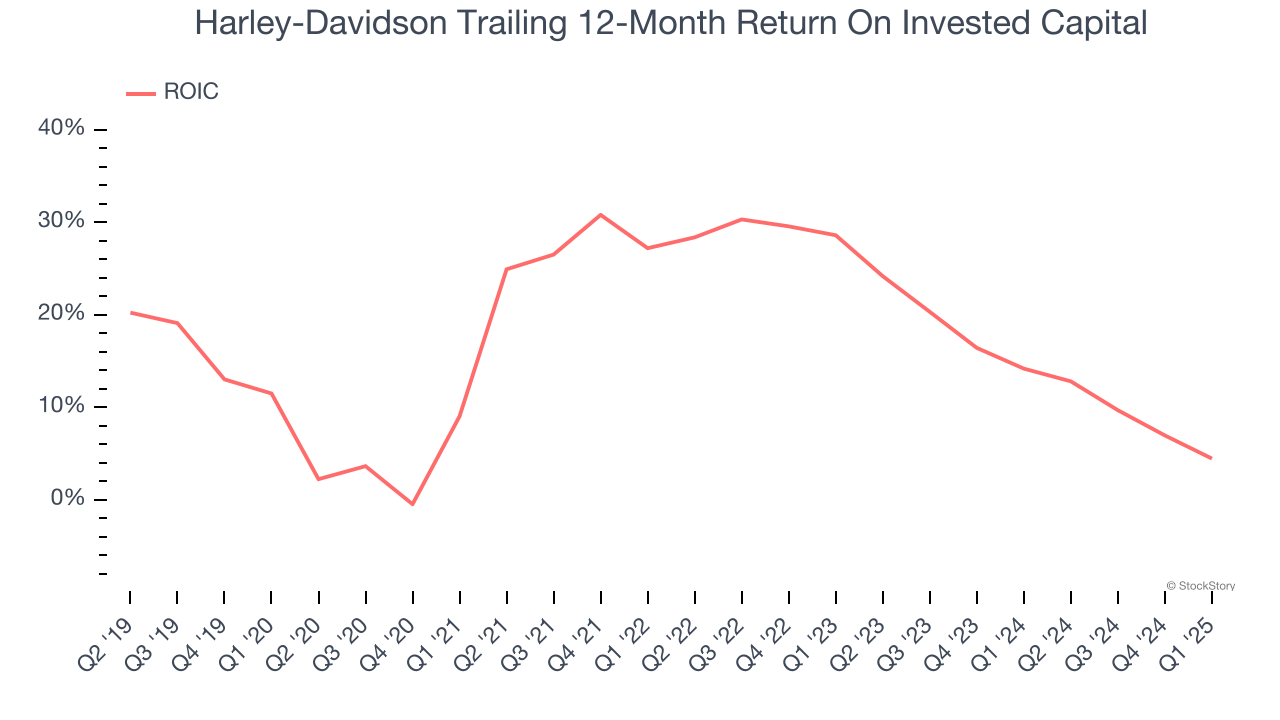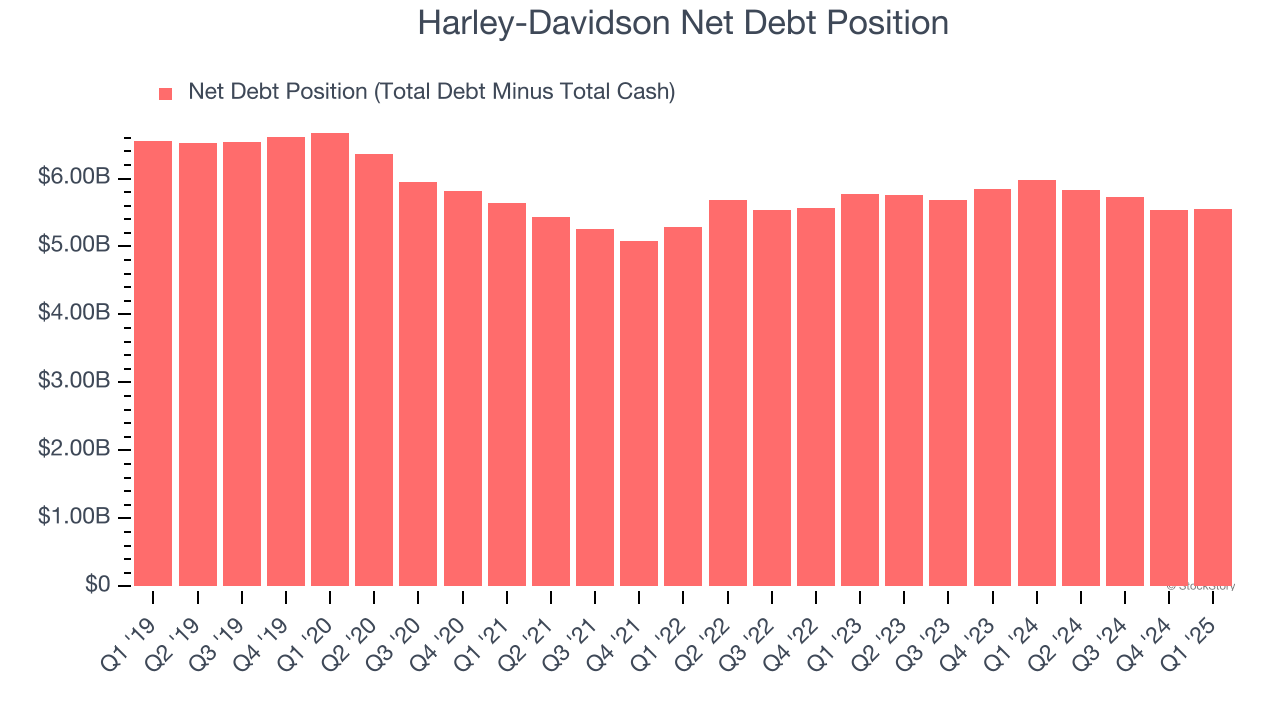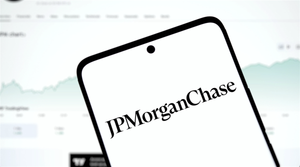
Over the past six months, Harley-Davidson’s stock price fell to $24.69. Shareholders have lost 16.3% of their capital, which is disappointing considering the S&P 500 has climbed by 5.4%. This might have investors contemplating their next move.
Is there a buying opportunity in Harley-Davidson, or does it present a risk to your portfolio? Dive into our full research report to see our analyst team’s opinion, it’s free.
Why Do We Think Harley-Davidson Will Underperform?
Despite the more favorable entry price, we're cautious about Harley-Davidson. Here are three reasons why you should be careful with HOG and a stock we'd rather own.
1. Decline in Motorcycles Sold Points to Weak Demand
Revenue growth can be broken down into changes in price and volume (for companies like Harley-Davidson, our preferred volume metric is motorcycles sold). While both are important, the latter is the most critical to analyze because prices have a ceiling.
Harley-Davidson’s motorcycles sold came in at 38,601 in the latest quarter, and over the last two years, averaged 20.1% year-on-year declines. This performance was underwhelming and implies there may be increasing competition or market saturation. It also suggests Harley-Davidson might have to lower prices or invest in product improvements to grow, factors that can hinder near-term profitability. 
2. New Investments Fail to Bear Fruit as ROIC Declines
A company’s ROIC, or return on invested capital, shows how much operating profit it makes compared to the money it has raised (debt and equity).
We like to invest in businesses with high returns, but the trend in a company’s ROIC is what often surprises the market and moves the stock price. Unfortunately, Harley-Davidson’s ROIC has decreased over the last few years. We like what management has done in the past, but its declining returns are perhaps a symptom of fewer profitable growth opportunities.

3. High Debt Levels Increase Risk
As long-term investors, the risk we care about most is the permanent loss of capital, which can happen when a company goes bankrupt or raises money from a disadvantaged position. This is separate from short-term stock price volatility, something we are much less bothered by.
Harley-Davidson’s $7.48 billion of debt exceeds the $1.93 billion of cash on its balance sheet. Furthermore, its 13× net-debt-to-EBITDA ratio (based on its EBITDA of $422.5 million over the last 12 months) shows the company is overleveraged.

At this level of debt, incremental borrowing becomes increasingly expensive and credit agencies could downgrade the company’s rating if profitability falls. Harley-Davidson could also be backed into a corner if the market turns unexpectedly – a situation we seek to avoid as investors in high-quality companies.
We hope Harley-Davidson can improve its balance sheet and remain cautious until it increases its profitability or pays down its debt.
Final Judgment
Harley-Davidson doesn’t pass our quality test. After the recent drawdown, the stock trades at 7.4× forward P/E (or $24.69 per share). While this valuation is optically cheap, the potential downside is huge given its shaky fundamentals. There are better stocks to buy right now. We’d suggest looking at one of our all-time favorite software stocks.
Stocks We Would Buy Instead of Harley-Davidson
Market indices reached historic highs following Donald Trump’s presidential victory in November 2024, but the outlook for 2025 is clouded by new trade policies that could impact business confidence and growth.
While this has caused many investors to adopt a "fearful" wait-and-see approach, we’re leaning into our best ideas that can grow regardless of the political or macroeconomic climate. Take advantage of Mr. Market by checking out our Top 9 Market-Beating Stocks. This is a curated list of our High Quality stocks that have generated a market-beating return of 183% over the last five years (as of March 31st 2025).
Stocks that made our list in 2020 include now familiar names such as Nvidia (+1,545% between March 2020 and March 2025) as well as under-the-radar businesses like the once-micro-cap company Kadant (+351% five-year return). Find your next big winner with StockStory today.
StockStory is growing and hiring equity analyst and marketing roles. Are you a 0 to 1 builder passionate about the markets and AI? See the open roles here.






